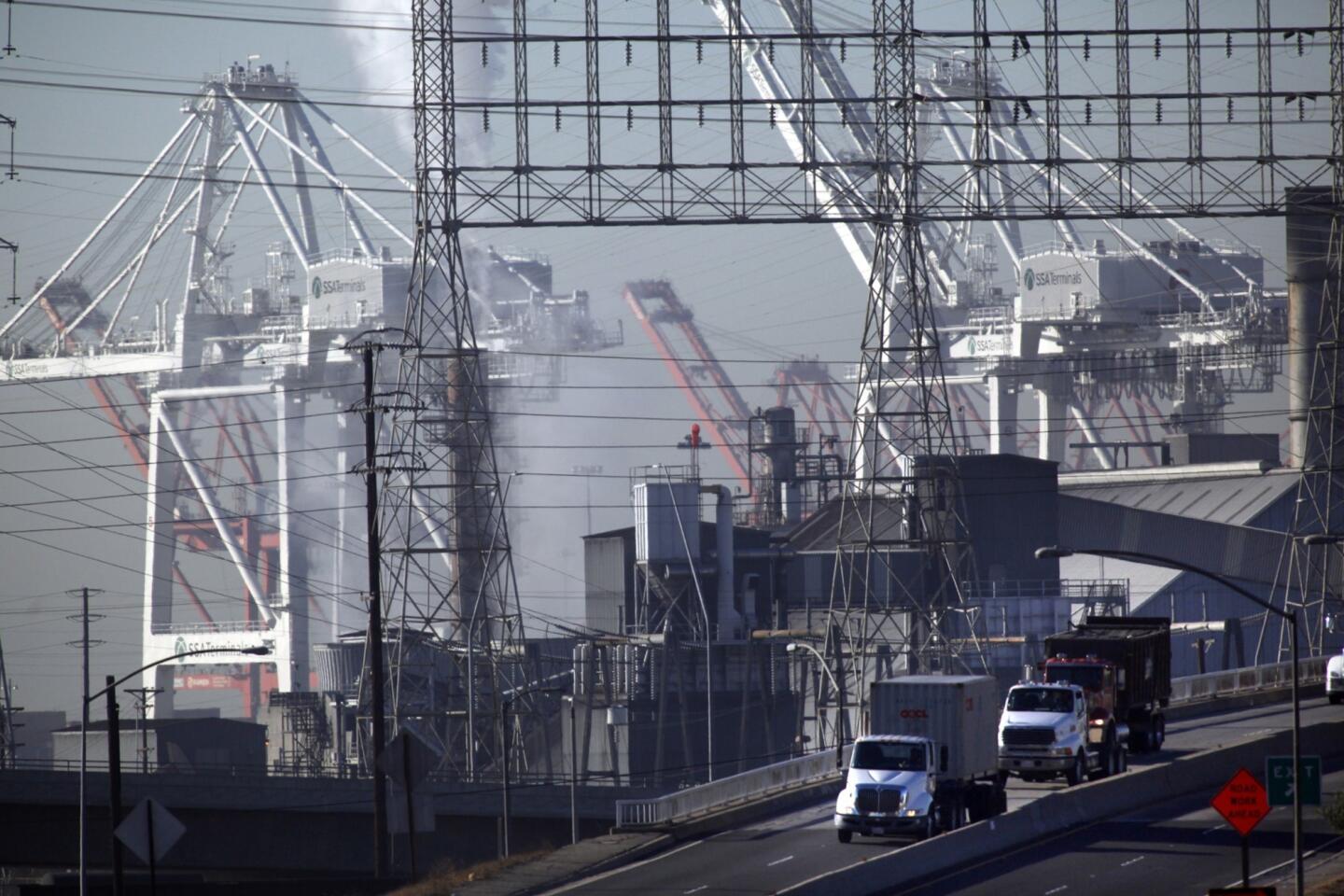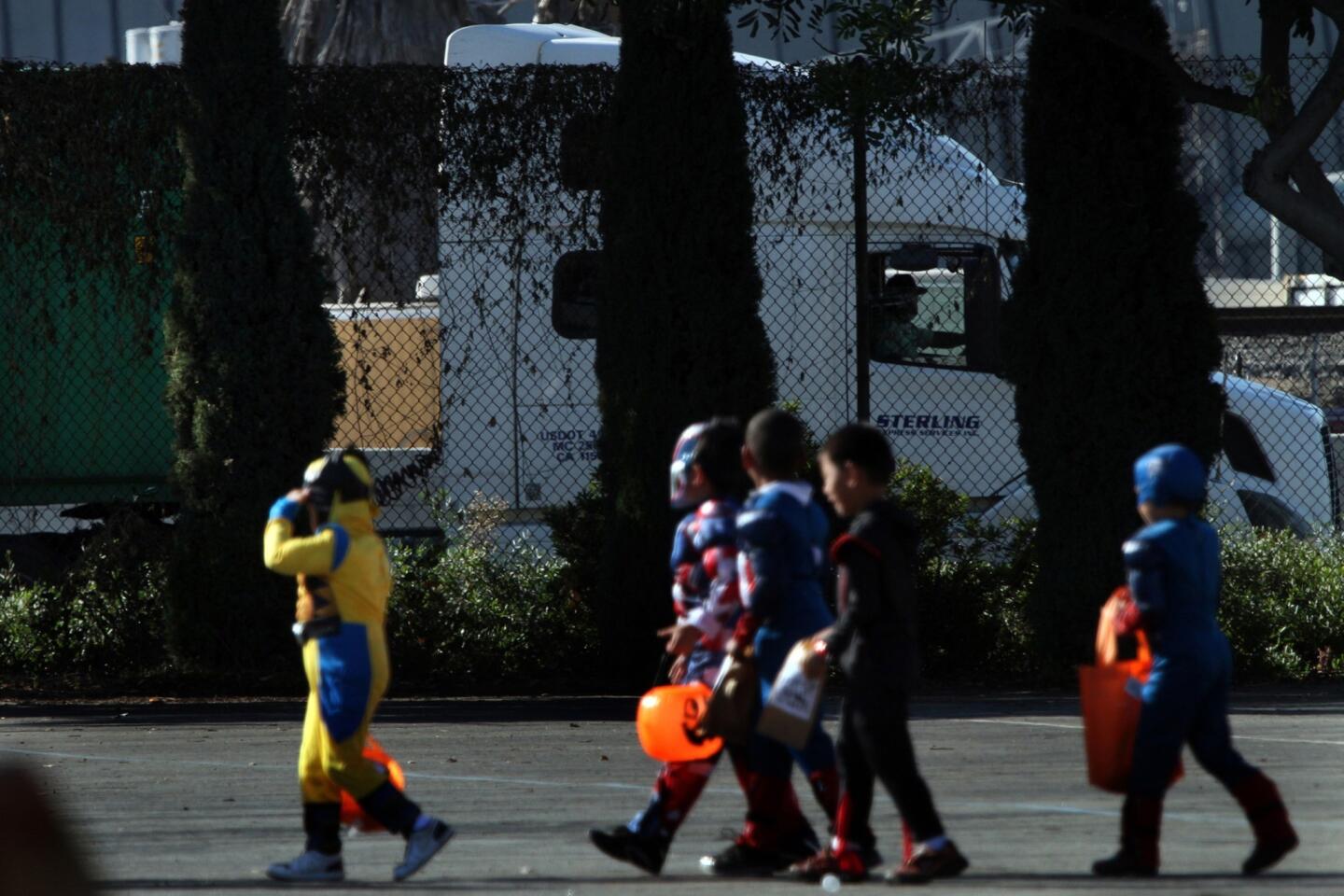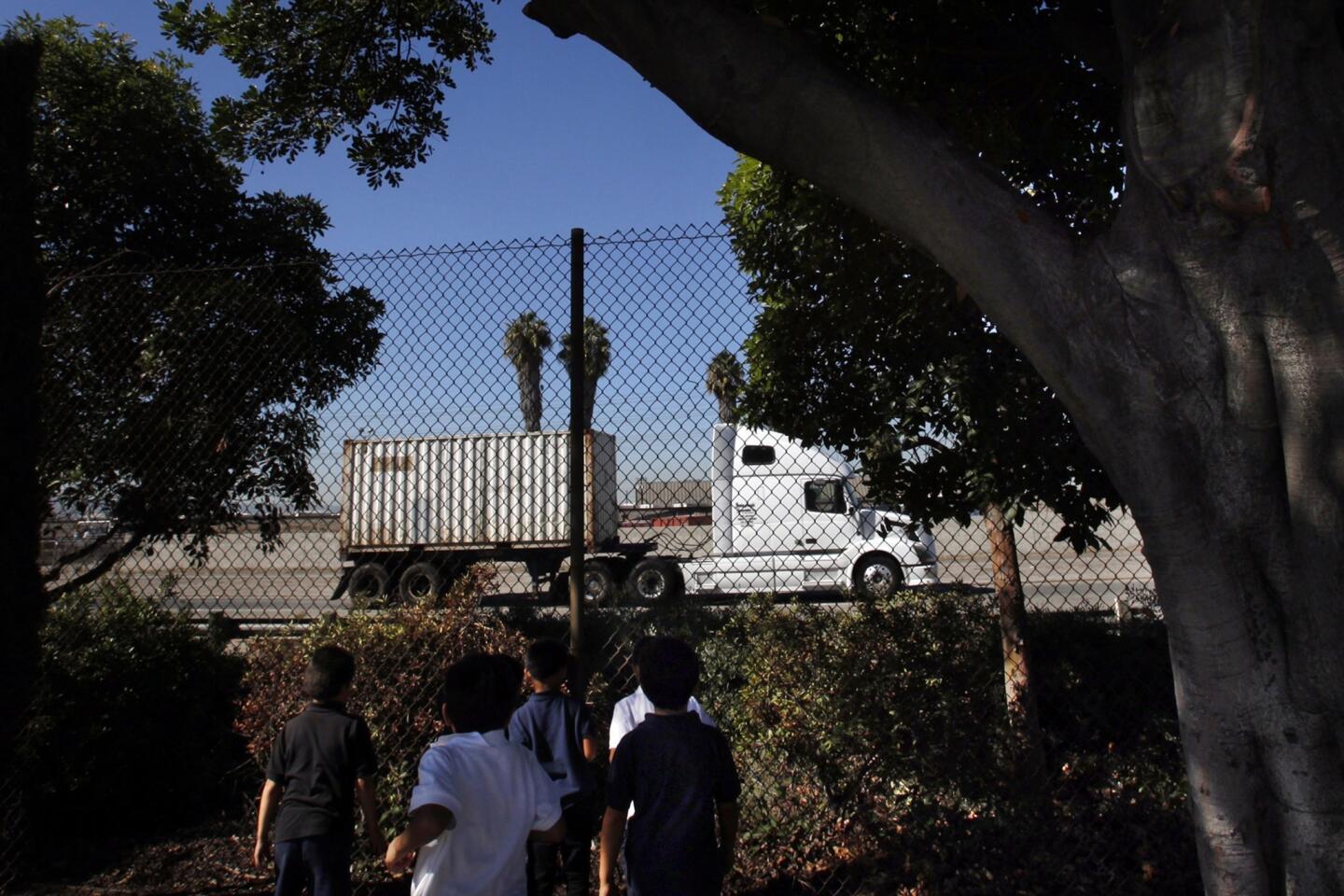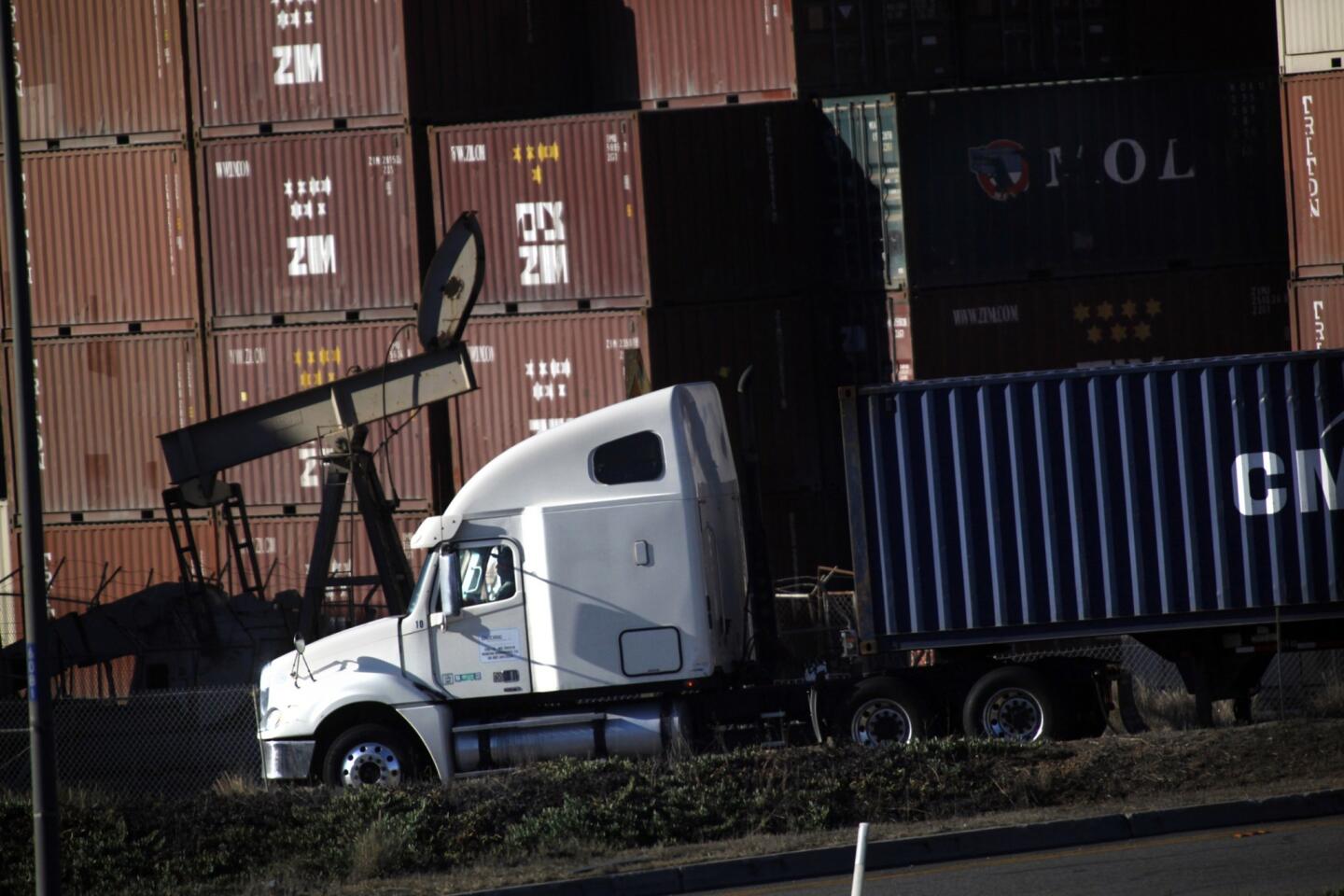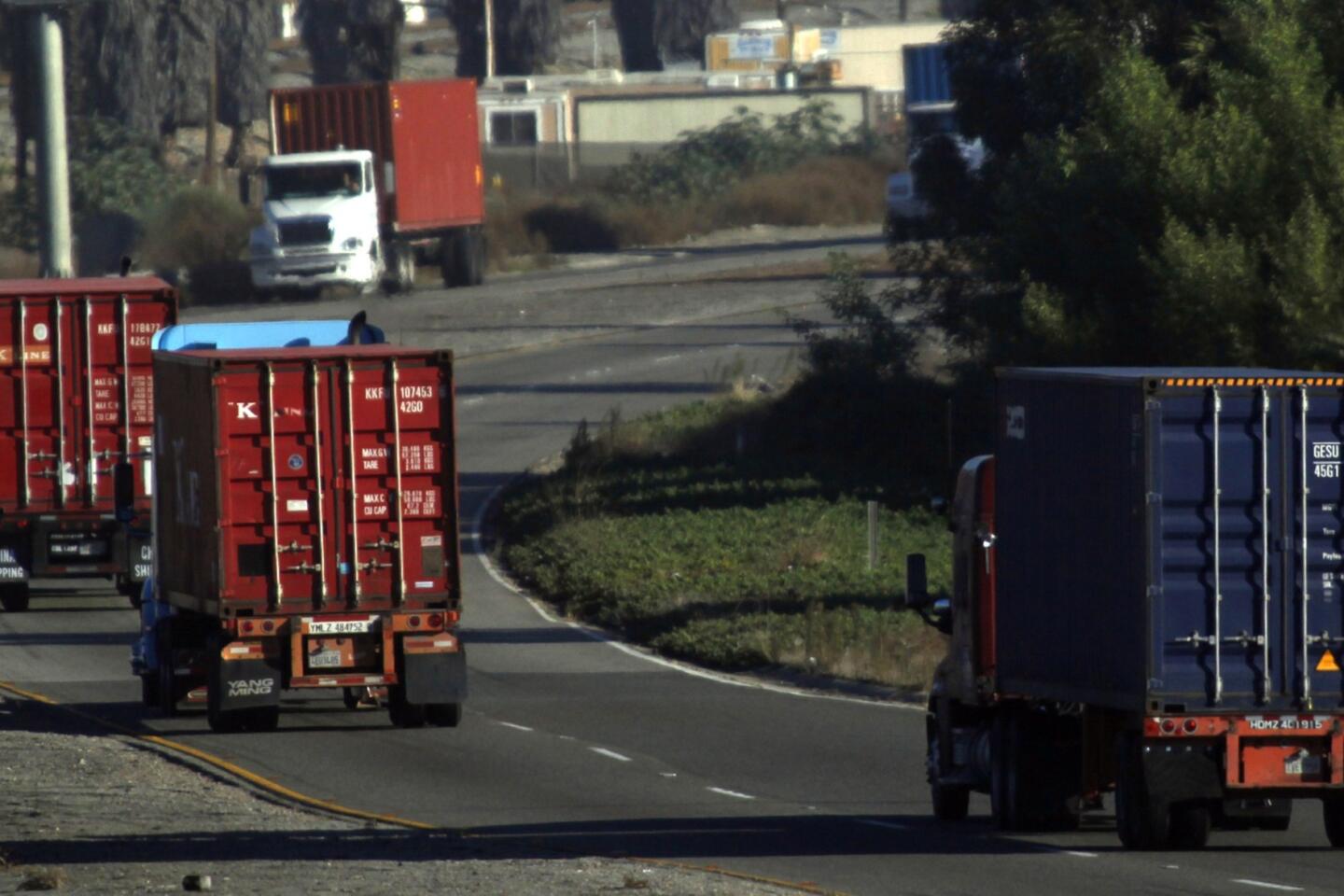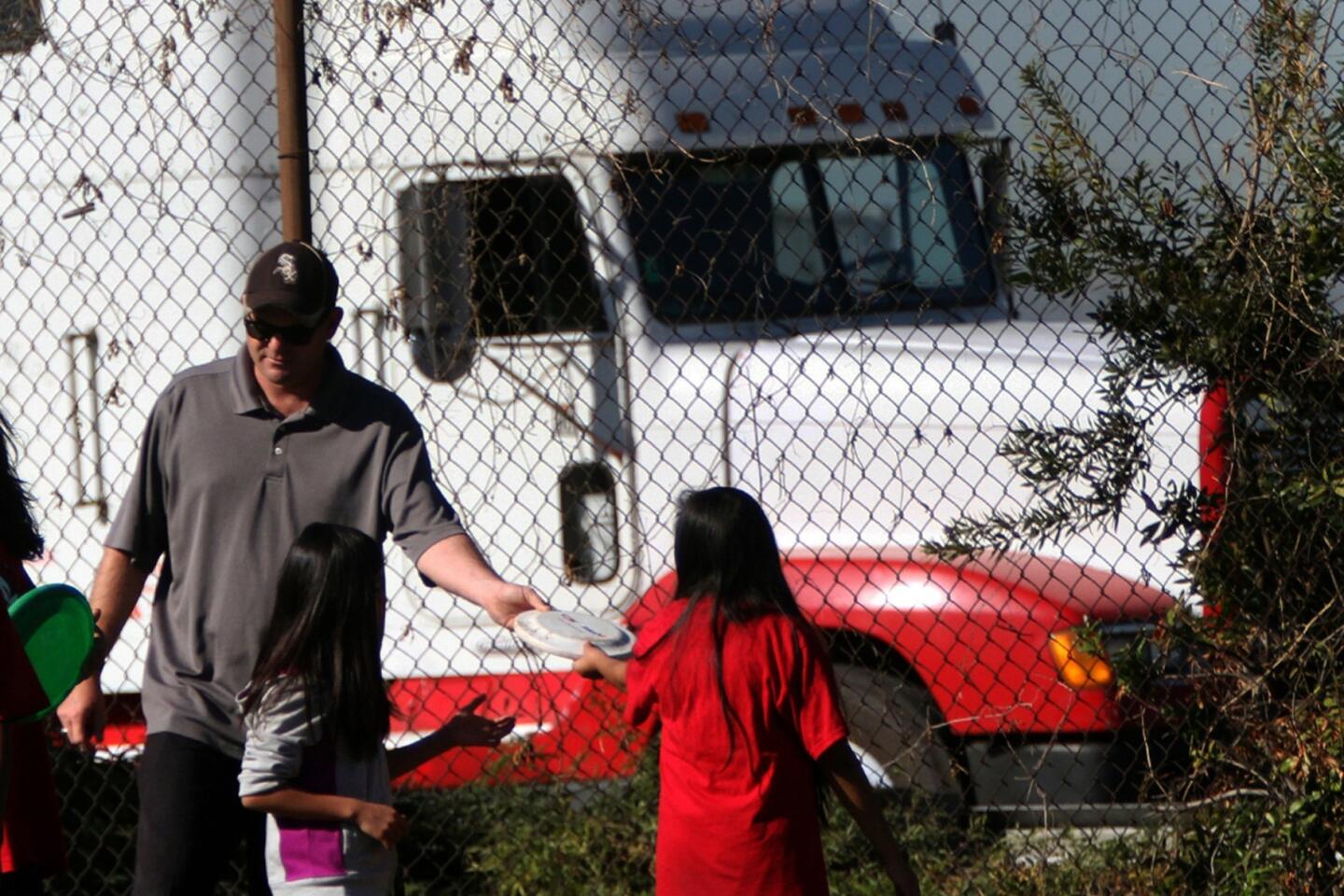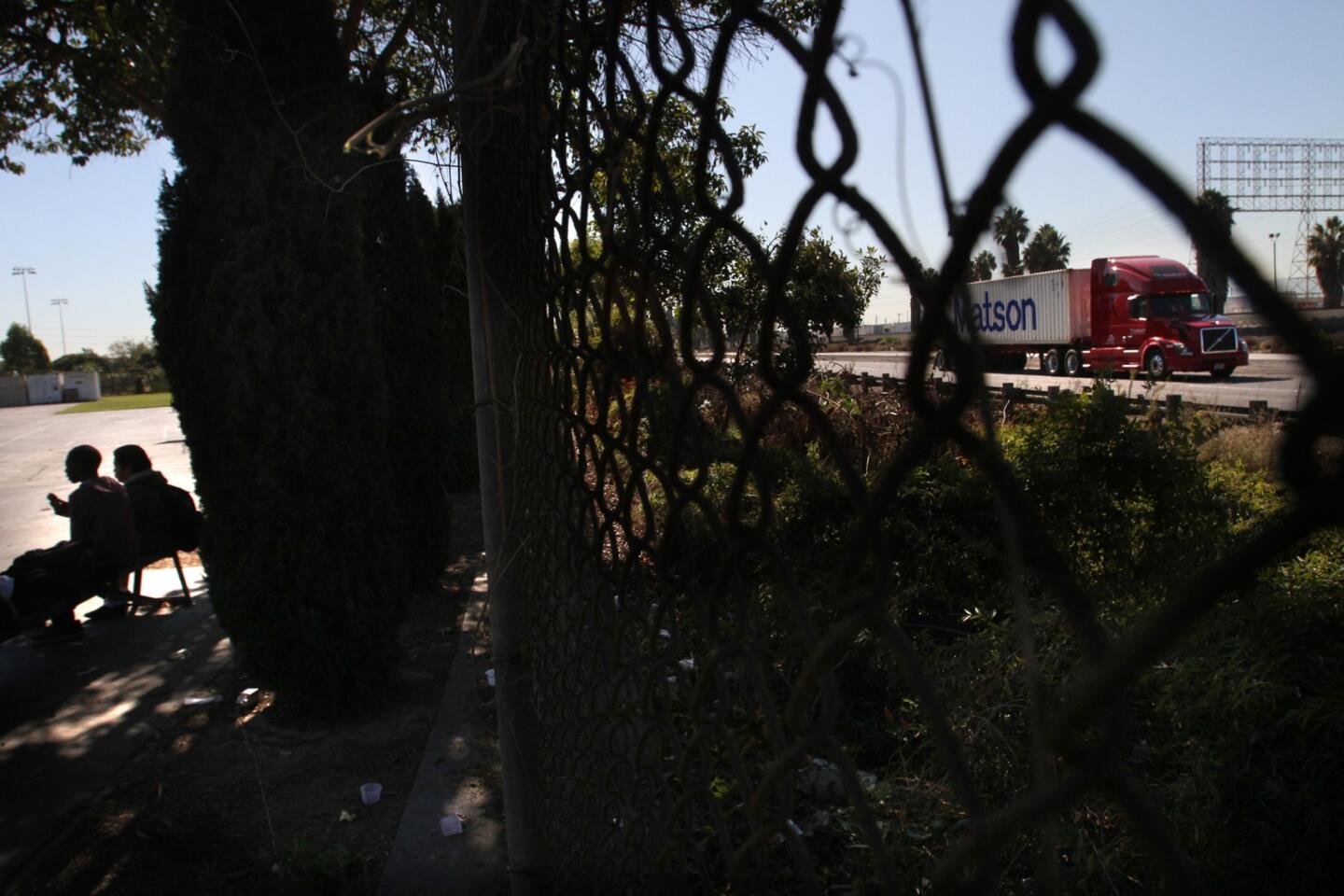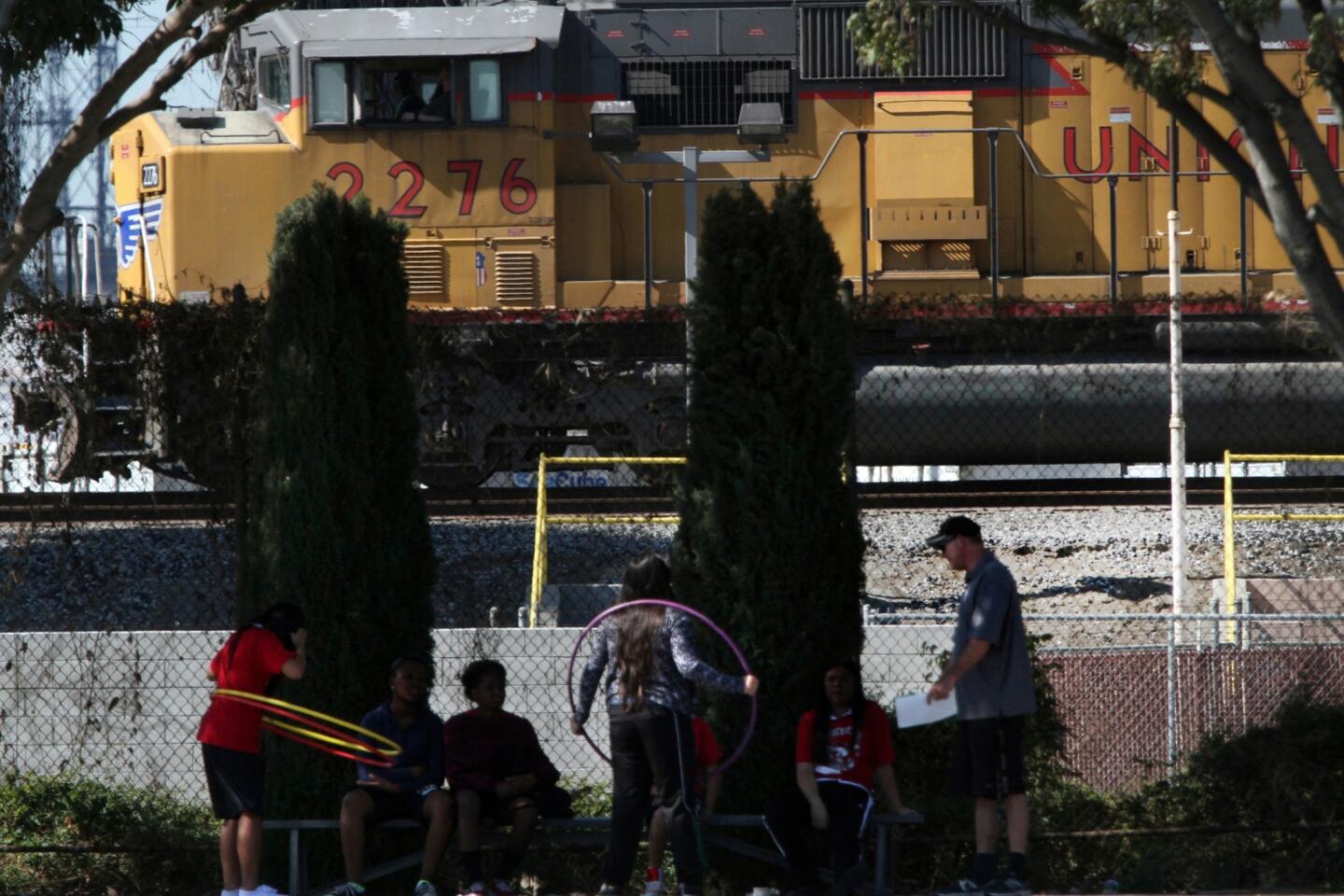Part of truck-heavy Terminal Island Freeway could become a park
- Share via
The around-the-clock rumble and hum of big rigs and cars funneling in and out of one of the world’s busiest port complexes have for years defined daily life in west Long Beach.
Streets of tidy homes, schools and playgrounds are boxed in by refineries, rail yards and truck routes to the harbor, including the gritty, four-mile Terminal Island Freeway.
Children are hospitalized for asthma at three times the rate of other Long Beach neighborhoods, and there are far fewer parks here.
But now city officials are considering a radical makeover of west Long Beach that would involve ripping out a one-mile section of one of the Southland’s first freeways, now mostly used by truckers, and replacing it with a long ribbon of green space.
The proposal, backed by an array of groups and the focus of a new state-funded study, would mark the first time a stretch of Southern California freeway was removed and converted to a non-transportation use.
Elsewhere, L.A. freeways continue to be upgraded and expanded. But the Terminal Island highway is an outlier — short and disconnected from the region’s interstate network.
Removing and repurposing older freeways to improve neighborhoods has caught on in recent decades. As central cities become denser and federal money for maintenance declines, cities such as Portland and Milwaukee have replaced freeways with tree-lined boulevards, redirecting travelers to surface streets and public transit. San Francisco took out two freeway segments, spurring redevelopment near the Civic Center and along the Embarcadero.
One reason is that urban designers with a more motorist-centric view of communities are being replaced by a new breed of planners, said Adie Tomer, a senior research associate at the Brookings Institution. “And our generation thinks differently.”
Councilman James Johnson represents the area and says the proposal offers an opportunity to improve the lives of thousands of west Long Beach residents. “The original sin of this whole area is bad land use planning,” he said. “If we are able to re-envision this freeway ... [and create] a buffer for neighborhoods, that’s a huge win.”
At this point, some government, business and trucking interests have declined to comment, raising the possibility of future resistance to the proposal.
Built by the Navy in the 1940s to connect the mainland to its base, the Terminal Island Freeway became a vital postwar link to the burgeoning ports of Long Beach and Los Angeles. Regional planners had hoped to connect the Terminal Island route to the region’s expanding highway network by extending it to what is now the 91 Freeway.
Completion of the Alameda Corridor freight rail line and expansion of the 710 Freeway made the link a less pressing priority, said professor James Moore, director of USC’s transportation engineering program. “This was a freight workhorse,” Moore said. “Now, it’s more or less become obsolete.”
The freeway starts near the waterfront and ends abruptly at Willow Street in Long Beach, spilling cars and trucks onto a city boulevard. The portion being studied for removal, north of Pacific Coast Highway, is smaller and less busy than most freeways that Angelenos are accustomed to navigating.
Vehicle counts are comparable to some surface streets near downtown Long Beach and one-tenth those on the 710 Freeway, a short distance to the east.
Replacing any portion of L.A. freeway with parks or bike lanes would mark a shift in thinking about the region’s future, experts say. Motorists have demonstrated that they can adapt to such changes, said UC Berkeley city planning professor Elizabeth Macdonald, who helped create plans for San Francisco’s Hayes Valley neighborhood after the Central Freeway was removed in 2003.
Long Beach owns the section of freeway being studied. Beginning next year, the city will use a $225,000 state grant to examine various options, including replacing the roadway with an 88-acre greenbelt.
That would be a marked improvement for the homes, schools, parks and transitional housing complex for veterans and the homeless that are now surrounded by industrial operations and freeways. The neighborhood has one acre of open space per 1,000 residents, compared with 17 acres in eastern Long Beach, officials note.
The high rate of childhood respiratory problems has earned the area the nickname “Asthma Alley” among parents and teachers. Recent initiatives to ban older, dirtier trucks and slow cargo ships in the harbor have helped lower pollution, state air quality regulators say. But some residents remain leery of the cumulative health effects of the freeways and industrial activity.
Lisa Lay, 29, has often smelled chemicals in the air when dropping off and picking up her children from Hudson Elementary School, which abuts the Terminal Island Freeway where big rigs often idle. School officials have assured her that indoor air testing is conducted regularly to protect students, she said.
Still, Lay worries because her children, ages 5 and 9, play on school blacktop next to the freeway. “I don’t want my kid breathing in that stuff,” she said.
This year, the Port of Long Beach funded a “mulch wall” next to the Terminal Island Freeway, one of the few in the region that lacks sound walls. The mulch barrier — a frame of metal fencing filled with trimmings from city trees — is intended to block noise and pollution.
Environmental advocates say such physical barriers aren’t the answer to freeway noise and air pollution. “Replacing the freeway is a much more long-term solution and yields many more benefits,” said Brian Ulaszewski, executive director of urban design nonprofit CityFabrick, which has pushed the freeway removal project.
Ulaszewski has an ambitious vision for the area that includes creating more than 300 acres of open space near the freeway corridor, some of which now belongs to Southern California Edison and rail yards.
Johnson, the councilman, said removing the freeway section could cultivate goodwill with residents fed up with the effects of continuing harbor development. “The secret to protecting that golden goose, our port, is to relieve some of this tension,” Johnson said.
Half a dozen community organizations, as well as Southern California Edison, the Long Beach Unified School District and the Port of Long Beach, are supporting the freeway removal study. But the neighboring Port of Los Angeles has remained silent on the proposal. The California Trucking Assn., the Pacific Merchant Shipping Assn. and the Harbor Trucking Assn. did not respond to requests for comment.
The study comes as the city of Long Beach is suing Los Angeles over a proposed rail yard expansion near west Long Beach, one of several planned projects that activists worry could delay or derail efforts to retire part of the freeway.
Some truck drivers fear closing the freeway would create traffic jams on other harbor area truck routes. “Everybody will be trying to use back streets,” said Robert Durant, 38, who traverses the freeway three or four times a day to deliver goods to the port.
Durant said he sympathizes with neighbors’ concerns. But removing any section of the freeway is likely to be controversial among truckers, he said. “People will have a lot to say about it.”
Others fear that the port’s growing infrastructure needs will trump interest in removing the freeway and taking additional steps to improve life in west Long Beach. Jesse Marquez of Coalition for a Safe Environment, a community group active in the area, said a new park “will only be a buffer for the pollution until we can clean up everything around it.”
More to Read
Sign up for Essential California
The most important California stories and recommendations in your inbox every morning.
You may occasionally receive promotional content from the Los Angeles Times.
